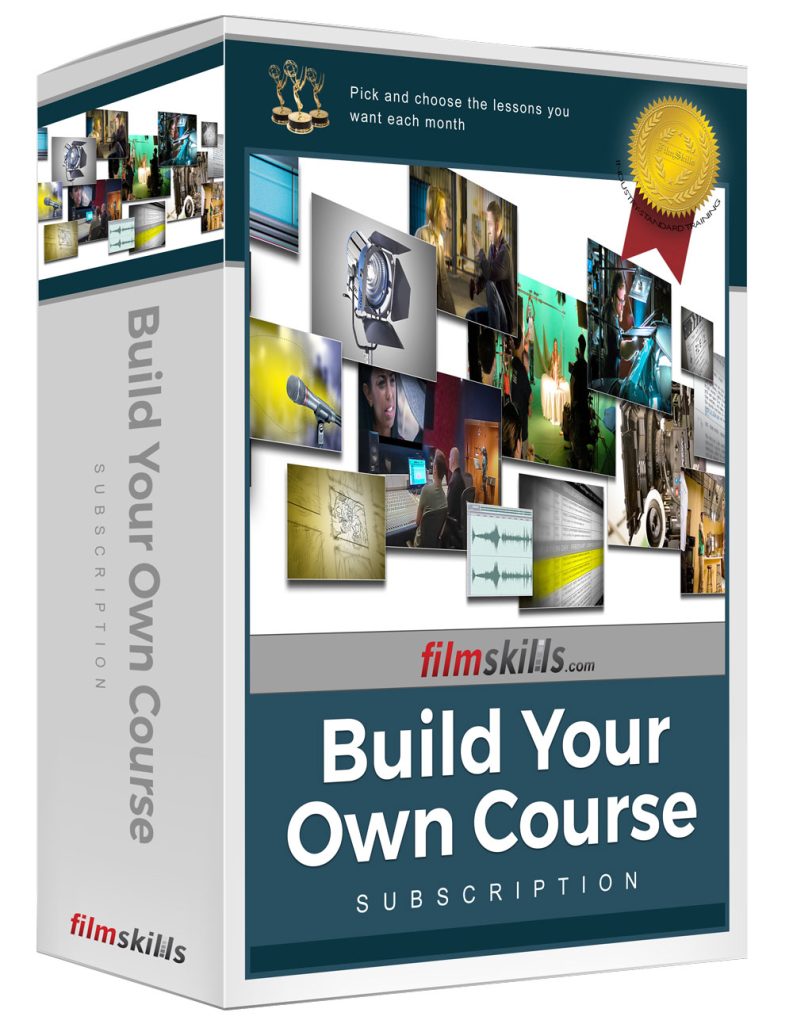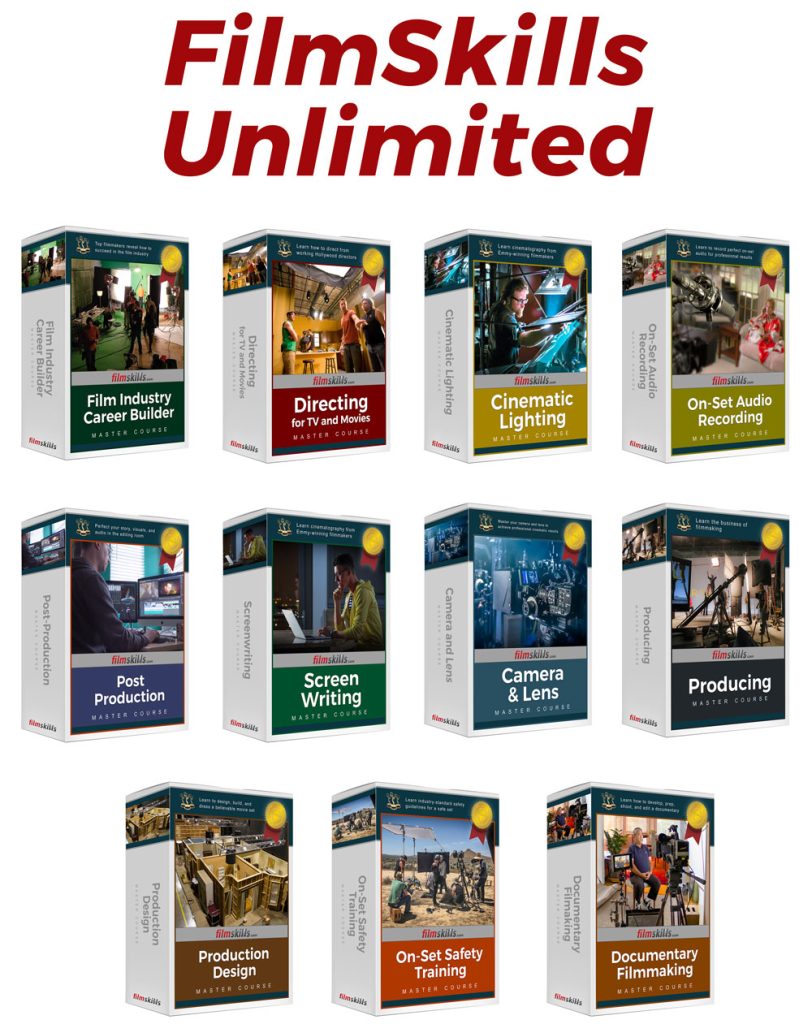The Complete Filmmaking Curriculum
Over a hundred Hollywood professionals helped build a comprehensive filmmaking curriculum.

Directing
Go on set with Emmy winning directors as they teach you the art and craft of directing actors, blocking the camera, leading the crew, and interpreting the script into what audiences see on screen.
Section 1: Director's Craft
Designed to help you understand the director’s role in visual storytelling, the seven updated lessons combine interviews with Hollywood directors, on-set tutorials, and methodical step-by-step approach to the director’s process.
A Director’s Prep - Beginning a Project
Learn how to begin the directing process, read the script for the first time, best prepare long before you even set foot on set, and how to breakdown the script for character and story. (27:17)
Creating a Shot List
Learn how to create a shot list, location requirements, how to decide your shots, the elements in a shotlist, how the shot lists are used to schedule and budget a film, and to prepare for days when you go over schedule or over budget. (17:41)
Basic Coverage
Learn the basic template for shooting the action in a scene - the master, coverage, inserts and cat-in-the-window shots, learn how to vary shot size to increase coverage, break the standard, plan for the edit, and ensure you get the coverage you need. (21:45)
Advanced Coverage
Learn how to craft a oner, create a psychological impact for each shot, create compelling establishing shots, manipulate the pacing and rhythm of a scene, determine the opening visual, and enhance transitions from one scene to the next. (25:54)
Watch a free lesson from this series
Storyboards and Pre-Visualization
Learn how to work with a storyboard artist, use pre-visualization software, know how detailed storyboards should be, creative restrictions to be aware of, how to create storyboards even if you can’t draw, and when to use animatics. (30:47)
Continuity and Script Notes
Learn the importance of on-set continutiy, how to maintain it, the role of the script supervisor, and how to create an industry-standard continuity notebook. (22:12)
The Visual Story
Learn how to use visual elements of shape, space, line, color, rhythm, movement and tone to frame the story. (38:22)
How to Shoot a Scene
Learn the process of how to shoot a scene: block, light, rehearse, tweak, and shoot. (39:23)
How to Direct a Scene
Emmy-winning director Jason Tomaric applies the concepts in this series to a sample scene, in which he walks students through the process of directing, blocking, and shooting a short scene. (31:00)
Working with the Military
Learn how to approach the National Guard, work with the US military, the types of resources the military can provide, and how to work with reenacters. (20:23)
Section 2: Casting the Roles
Learn how to find and cast actors who bring a creative presence to the screen and provide a marketable face for distributors and audiences.
Finding Actors
Learn how to work with casting directors to approach recognizable actors, how to develop a script that appeals to certain talent, the art of packaging, casting actors on your own, and the pros and cons of working with unknowns. (23:25)
How to Conduct an Audition
Learn how to find the ideal audition space, attract qualified actors, conduct auditions, and learn what to look for so you can find the perfect cast for your movie. (25:09)
The Art of Auditioning
Auditions can be an intimidating and difficult process for both actors and directors. In this FilmTalk, accomplished actor Michael Laskin takes us into the actor’s process to reveal tips and techniques for honing and improving the audition process. (18:38)
Callbacks
Learn how to conduct the second and third auditions, what to do after the auditions, recognize danger signs in actors, and how to prepare the actors for the next step: the rehearsals. (12:08)
Working with Local Celebrities
Learn the best way to approach local celebrities, how to use them, and the secret benefits they can bring to your movie. Working with local celebrities will not only improve the visibility of your production, but lead to a number of other benefits that can not only help promote the movie, but assist greatly in production. (15:46)
Section 3: Directing Actors
Learn the skills to effectively direct actors to achieve an authentic performance on set.
Analyzing Character
In this module, you will learn directing techniques to help actors determine the subtext, intent, and back story of their characters. Develop your directing skills and help your actors portray honest, memorable characters. (30:19)
Rehearsing Actors
Learn how to structure rehearsals, how to conduct a table read, and what the responsibilities are of the director and actors during the rehearsal process. (26:47)
Directing Actors on Set
Learn what to say to an actor at the beginning of every scene – 30 seconds before you call action and 30 seconds after you call cut, learn how to rehearse on set, establish strong blocking, and how to help actors balance their performance with the technicalities of film production. (38:28)
The Language of Directing Actors
Learn from Hollywood actors and directors on how to approach and work effectively with actors on set, how to deal with problematic actors, and how to communicate in the actor’s language. (34:07)
Watch a free lesson from this series
Blocking the Actors
Learn how to block the actors, what story cues to look for, how to drive the blocking emotionally, and how to work with the actors to get the best physical performance possible. (33:11)
Directing Extras
Learn how to find extras, the right way to direct them, how to cheat them on set, liability concerns and how to avoid them, logistics on the shooting day, and the most common problems filmmakers encounter when working with extras. (24:35)
Directing Mistakes
Learn to identify common directing problems and how to fix them to ensure you get the best performance on set possible. (26:28)
Rehearsal Exercises
Learn valuable techniques from working Hollywood directors to get to the heart of the actors’ performance, learn rehearsal techniques from developing the character to overcoming mental blocks on the set. (12:49)


